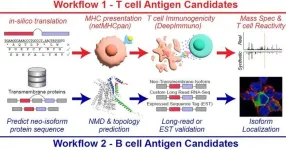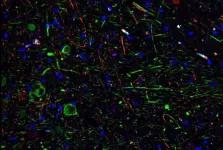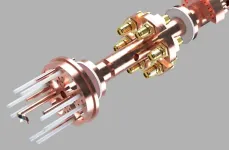High resolution photos, background footage, video clips can be downloaded at this link: https://photos.app.goo.gl/Sn4unWFGHb5ULdeB9
Hamilton, ON, Jan. 17, 2024 – An international team of researchers from McMaster University, University of Alaska Fairbanks and the University of Ottawa has tracked and documented the movements and genetic connections of a female woolly mammoth that roamed the earth more than 14,000 years ago.
She travelled hundreds of kilometres through northwestern Canada and Alaska over the course of her lifetime, which ended when she encountered some of the earliest people to have traveled across the Bering Land Bridge.
The last remaining woolly mammoths lived alongside the region’s first peoples for at least 1,000 years, but little is known about how the mammoths moved across a landscape increasingly populated by people and whether those movements made them more vulnerable to hunting.
The mammoth at the centre of this study, named Élmayuujey’eh by the Healy Lake Village Council, was discovered at Swan Point, the earliest archaeological site in Alaska, which also contained remains of a juvenile and a baby mammoth. Mammoth remains have also been found at three other archaeological sites within 10 km of Swan Point.
Researchers conducted a detailed isotopic analysis of a complete tusk and genetic analyses of remains of many other individual mammoths to piece together their subject’s movements and relationships to other mammoths at the same site and in the vicinity. They determined that the Swan Point area was likely a meeting ground for at least two closely related, but distinct matriarchal herds.
The findings are published today in the journal Science Advances.
“This is a fascinating story that shows the complexity of life and behaviour of mammoths, for which we have very little insight,” says evolutionary geneticist Hendrik Poinar, director of the McMaster Ancient DNA Centre who led the team that sequenced the mitochondrial genomes of eight woolly mammoths found at Swan Point and other nearby sites to determine if and how they were related.
Researchers from the University of Alaska Fairbanks performed isotopic analyses of the tusk. Mammoth tusks grew like tree trunks, with thin layers marking steady growth and isotopes from different elements—oxygen and strontium, for example—provided information about the subject’s movement.
The female mammoth was approximately 20 years old when she died, having spent much of her life in a relatively small area of the Yukon. Researchers report that as she grew older, she travelled over 1000 km in just three years, settling in interior Alaska and dying near a closely related baby and juvenile, for which she may have been the matriarchal lead.
Mammoths are presumed to behave much like modern elephants, with females and juveniles living in close-knit matriarchal herds and mature males traveling alone or in looser male groups, often with larger home ranges than the females.
Researchers say using multiple forms of analysis, as in this study, allows them to make inferences about the behaviour of extinct mammoths.
The McMaster team extracted and analyzed ancient DNA from the tusk of Élmayuujey’eh, which revealed the mammoth was closely related to the other mammoths from the same site and more distantly related to others from a nearby site called Holzman.
Early human populations, with a deep understanding of mammoths and the technology to hunt them, took advantage of mammoth habitats, using scavenged and hunted remains as raw materials for tools, the researchers report.
In addition to the direct impact of hunting on mammoth populations, human activity and settlements may have also indirectly affected mammoth populations by curtailing their movements and their access to preferred grazing areas.
“For early people in Alaska, those localities were important for observation and appreciation, and also a source of potential food,” says Poinar.
The collected data suggests that people structured their seasonal hunting camps based on where mammoths gathered and may have played an indirect role in their local extinction in Alaska, which was compounded by a rapidly changing climate and changing vegetation.
Such deprivations did not appear to have affected the subject mammoth, though.
“She was a young adult in the prime of life. Her isotopes showed she was not malnourished and that she died in the same season as the seasonal hunting camp at Swan Point where her tusk was found,” said senior author Matthew Wooller, who is director of the Alaska Stable Isotope Facility and a professor at UAF’s College of Fisheries and Ocean Sciences.
“This is more than looking at stone tools or remains and trying to speculate. This analysis of lifetime movements can really help with our understanding of how people and mammoths lived in these areas,” says Tyler Murchie, a recent postdoctoral researcher at McMaster who conducted the ancient DNA analysis with Sina Baleka. “We can continue to significantly expand our genetic understanding of the past, and to address more nuanced questions of how mammoths moved, how they were related to one another and how that all connects to ancient people.”
The research was funded in part by the National Sciences and Engineering Research Council of Canada (NSERC).
The researchers can be contacted directly at : Hendrik Poinar, poinarh@mcmaster.ca ; Matthew Wooller, mjwooler@alaska.edu
-30-
Media contacts at McMaster University:
Michelle Donovan
Associate Director, Media Relations
McMaster University
donovam@mcmaster.ca
(c) 905-512-8548
Media contact for the University of Alaska:
Jeff Richardson
Communications manager and R/V Sikuliaq science liaison
University of Alaska Fairbanks
Jarichardson6@alaska.edu
Office: 907-474-5350
Media contact for the University of Ottawa:
Bernard Rizk
Media Relations Officer
University of Ottawa
brizk@uOttawa.ca
613-769-9306
END








